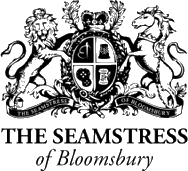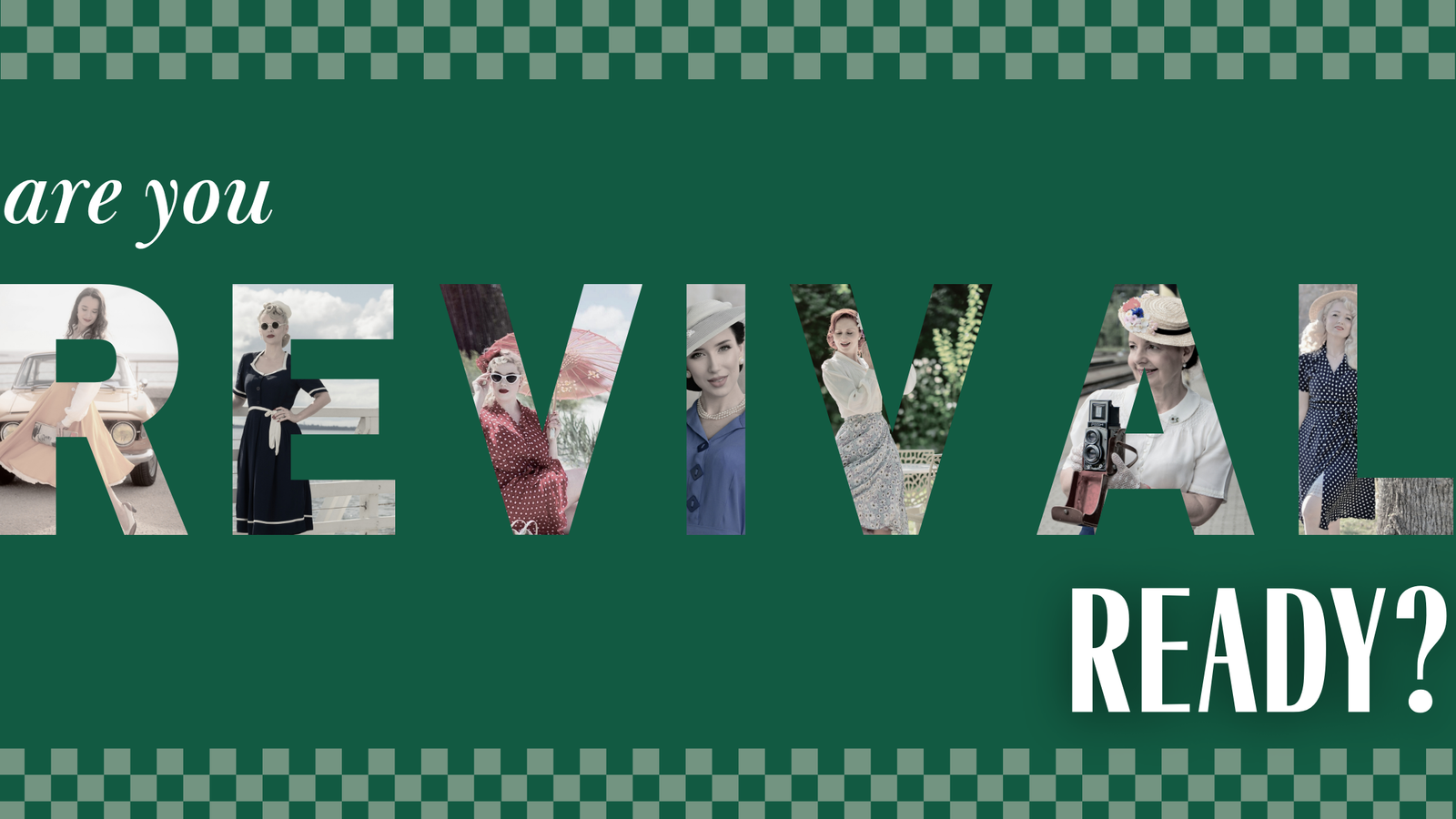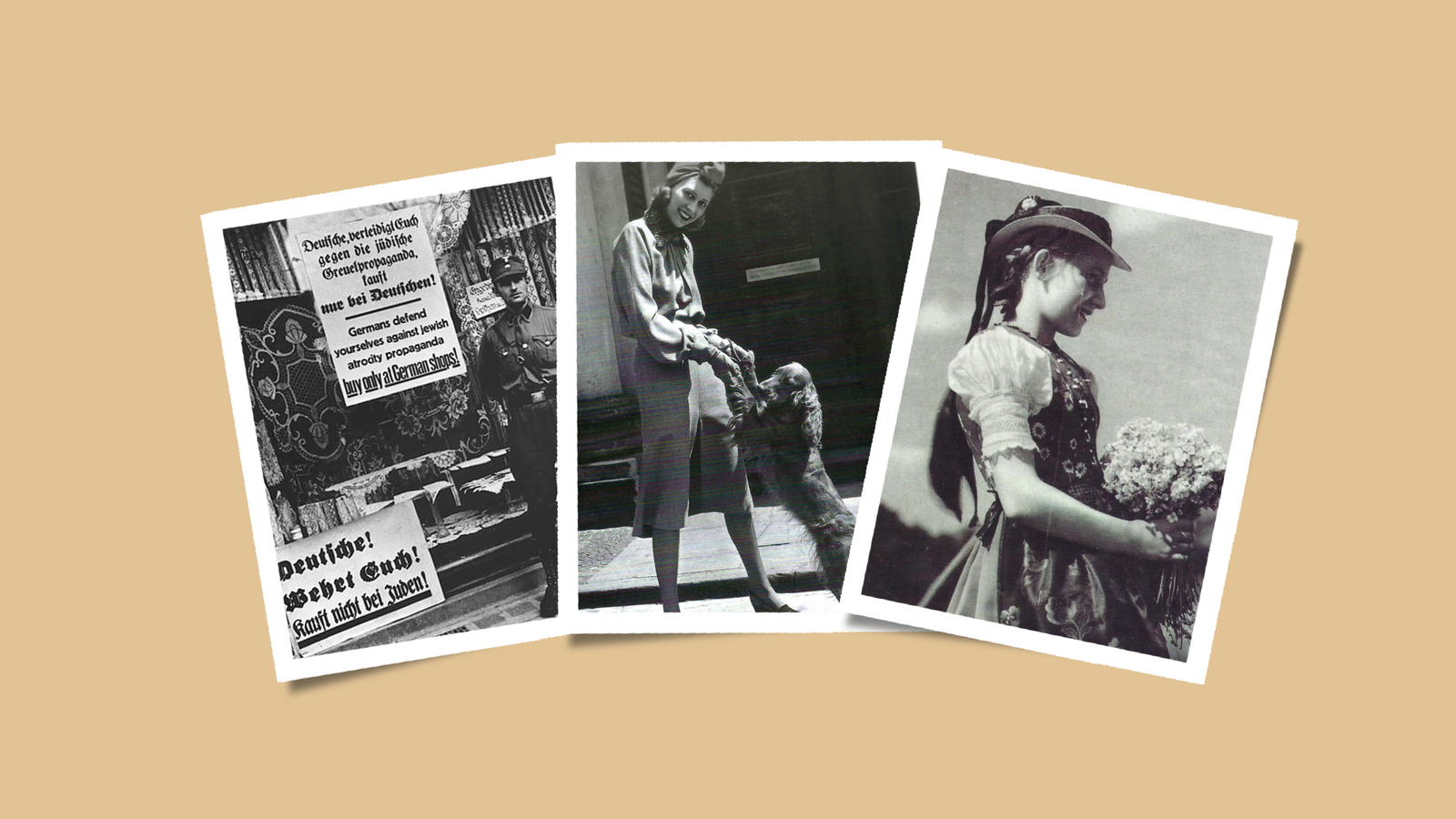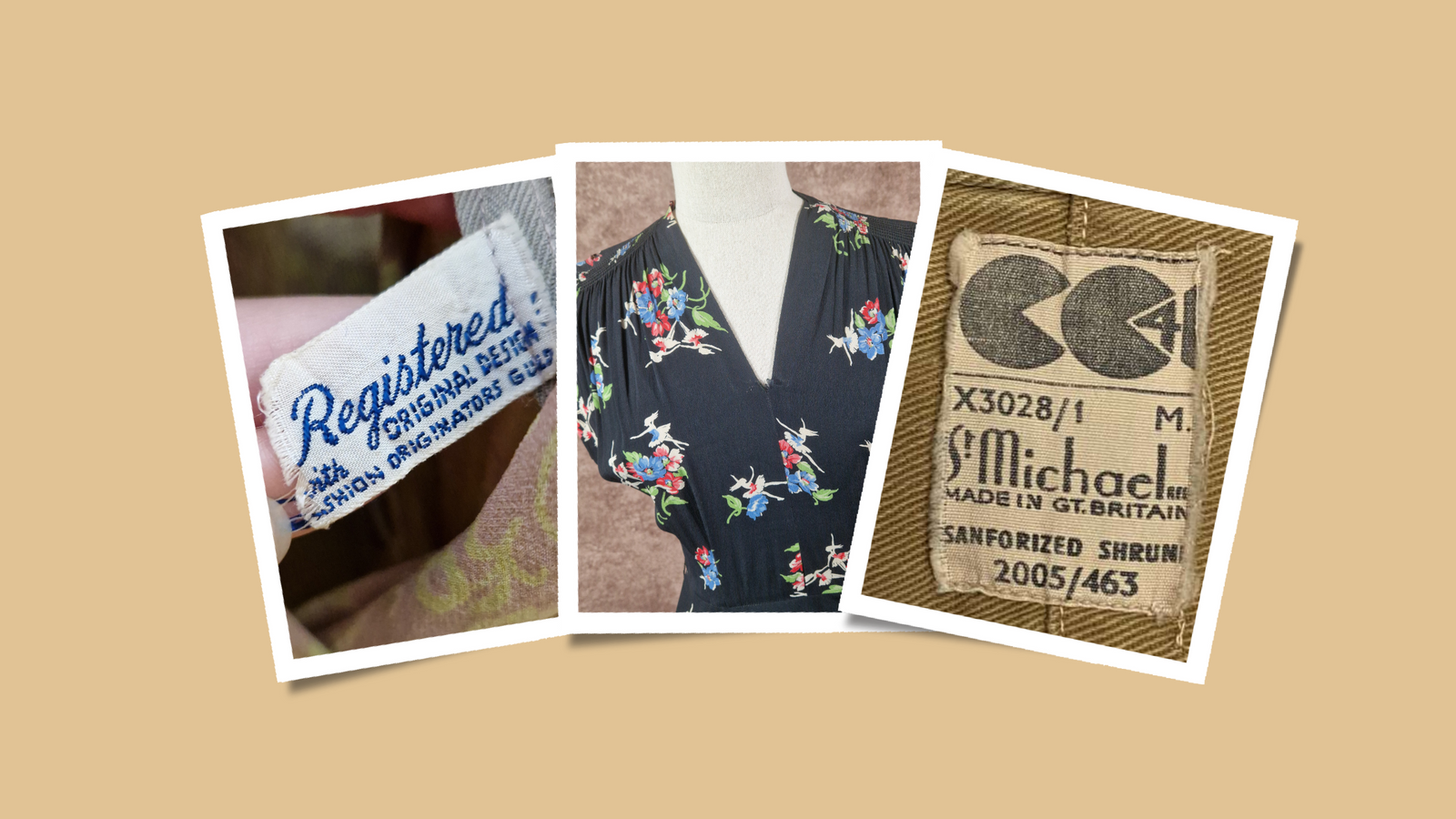“For Beauty on Duty” - The Power of Lipstick in WW2
During the Second World War, almost all everyday provisions from food to clothing were rationed and in short supply around Britain. Despite shortages, makeup - lipstick especially - was not rationed, and played a key role in keeping morale high across the country and on the front lines.
Makeup advert featuring a lady wearing a WREN (Women's Royal Naval Service) uniform. (Credit: vintagehairstyling.com)
Through government messages and advertising, women in Britain were bombarded with the message that their beauty was their duty, and they should strive to look beautiful and wall-kept to play their part in the war.
Maintaining appearances was something the British government strived for during the war. They were extremely concerned that a lack of interest in one’s appearance could indicate low morale in the public, which would be a severe detriment to the ongoing war effort. Showing strength at home by keeping standards high with beauty and fashion despite the ongoing conflicts showed that the country had resistance, that its people had not broken!
To keep morale and standards high with women’s appearances, the British government emphasised that looking beautiful was a major way in which women could play their role in contributing to the war effort. Maintaining a sense of glamour in day-to-day life was portrayed as a way for women to retain their dignity and bravery in times of fear and worry - they could quite literally put on a brave face.
Advertising began to emerge from the government and fashion publications, including British Vogue, which wrote:
“...women to dress their best not only for the nation’s morale, but also for the boys fighting away from home, and show resistance to the enemy.”
“To be as attractive as we can is almost a civic duty; there are so many sad and ugly things in the world that women should say to themselves humble, not vanity. ‘I will try to be as pretty as I can so that when people look at me, they will feel refreshed. I will make an effort to be easy on the eye”
There was a point in which the government considered putting cosmetics on the rationed list so that the materials could be used for war production instead. However, it was considered that such a move would have a huge impact on the morale of the country and the idea was blown out of the window.
Lipstick also had the power to offer mental support to women across the country. Bright lipsticks on dim days “make the corners turn up when the lips will not keep smiling”. The ladies didn’t have to force themselves to put on a brave face because the lipstick did that job for her, and kept up the image of resistance when out in public.
Makeup had the power to give women the “impression of being normal, paired with having to take on new and difficult responsibilities” which had required so many women to make enormous sacrifices while pretending all was well on the home front.
Not only did women have to deal with conscription, new and unfamiliar employment, and concern for the lives of so many of their loved ones and for the future of the country and the world at large, but they had to do it whilst remaining outwardly composed.
Whilst Britain (and the USA were not far behind) hammering home the importance of makeup and beauty, Germany had demanded the exact opposite of their women.
During the war, Germany had urged women to remain in their traditional roles of wives and mothers whilst depriving themselves of ‘luxuries’ such as makeup. The Nazi Party deemed it essential that all necessary chemicals and ingredients which were used for cosmetics instead be concentrated on being used for their war productions.
To justify this to the women of the country, Hitler would say that in his eyes the ideal German woman would be one who wore plain, simple, yet well-kept clothing with no makeup and would be as naturally beautiful as possible. Even the repair of permanent-wave machines (a machine which baked curls onto a women’s head, giving the popular wave perms of the 1920s) had been completely scrapped so all attention could be focused on the war instead.
A permanent wave machine - it could take half a day to set the curls. (Credit: invention.si.edu)
With Hitler taking a hatred towards makeup, cosmetics companies in the UK and US snapped up the opportunity to advertise their products as a symbol of a “free society worth defending” and in defiance of the enemy. Propaganda campaigns popped up all over suggesting that wearing red lipstick went directly against Hitler’s opinion - leaving women feeling like they were fighting back against him directly in their own way.
Britain in particular was eager to promote feminine glamour to oppose the enemy’s traditions, and bright red lipstick became a common staple in women’s advertisements.
These advertisements also played a huge role in encouraging women to take on the essential jobs which had been left vacant when the men left for war.
In December 1941, Britain became the first country to legalise the conscription of women into the war effort. By July 1943, 90% of single and widowed women between the ages of 20 - 50 in the country had been called up to take on new positions to help keep the country alive. There were several employment options which they could have chosen, whether working in the armed forces (such as the WRENS, Women’s Auxiliary Air Force, Auxiliary Territorial Service), factories, or working at childcare centres or canteens.
Makeup was a key player in getting women to sign up for these new roles by showing that it was possible to still look fabulous whilst doing their part in the war. Factories would supply women with their own lipstick tubes in changing rooms to give that little push in morale in the working communities.
Women in munitions factories could even find themselves with a special allowance to purchase face creams! Due to the toxic chemicals they were exposed to, factories recommended to women wear face cream and cosmetics to act as a barrier and protect their skin (whether that protected them enough is another cup of tea).
Many women now found themselves in roles that were more physical and dirty than they were used to, and often wore shapeless jumpsuits and overalls as part of their work attire. To retain an essence of femininity despite the unflattering clothing, women would wear lipstick in shades likeVictory Red and kept their hair pinned neatly under headscarves tied into a turban - keeping elements of glamour in their outfits despite the work conditions.
The lipstick and limited accessories “was seen as a symbol of patriotism during the time, not only did it make women feel more feminine, it made them feel like they were defying the difficult times that were happening around them.”
It didn’t take long until such styles became a staple in labour workers' fashion, and was adorned by the Working Ordanance Women in the US to promote ‘Rosie the Riveter’, a campaign aimed at encouraging women into wartime jobs.

Of course, there was always an underlying goal with propaganda surrounding makeup. Whilst it was essential to keep morale high on the home front, it was almost as important to keep the men fighting overseas enthused about coming home to such a glamorous woman. In a way, it gave some men a reason to keep fighting despite the odds.
REBRANDING IN THE WAR
The war was undoubtedly a time which advertisers took advantage of to boost their sales in the name of patriotism. Big name brands started patriotic campaigns and completely rebranded their products to be suitable for the war effort.
Tangee, one of the biggest lipstick manufacturers of the time, started a campaign called “War, Women, and Lipstick” and would feature copy such as:
“No lipstick - ours or anyone else’s - will win the war. But it symbolises one of the reasons we are fighting… the precious gift of women to be feminine and lovely, under any circumstance”.
(Credit: cosmeticsandskin.com)
Even publishers including Vogue often featured women wearing red lipstick in their magazines, subtly adding to the idea of the red lipstick being part of the war effort for women.
Yardley, another huge British cosmetic company, paired their campaign with a strong feminist statement in this advertisement below - a real encouragement to any woman reading.
(Credit: tuppencehapenny.com)
Even the American Marine Corps. Women’s Reserve recognised the importance that lipstick played in getting women to join their ranks. They invited Elizabeth Arden to create a bespoke makeup kit for them, which would not only boost the morale of women already in the reserves but to entice new members to enlist so that they could be part of the fashionable uniform and makeup combination. It goes without saying that Elizabeth Arden made sure that the colour of the lipstick matched and complemented the reserves uniformperfectly.
Actress Constance Ford photographed by Philippe Halsman, 1941 (Credit: ikrmagazine.com)
Similar tactics were used in Britain, with the government teaming up with the beauty industry to create small guides on what makeup matched your outfit depending on where you worked.
It was suggested that any woman wearing khaki-coloured uniforms should wear peach-toned powders on their face, and ladies in the WRENS (Women's Royal Naval Service) should brush their hair up from their face to complement their hat, and women in the ARP (Air Raid Precautions) should have“bubble perms” under their tin hats and use Auxiliary Red lipstick and rouge.
A makeup kit created in 1939 by British cosmetics company Cyclax was designed to fit perfectly in service women's pockets!
Credit: cosmeticandskin.com
Although the war was won from the joint effort of thousands of individuals, lipstick was without a doubt a force to be reckoned with. Lipstick was an uplifting and powerful force for women during the war, and the impact that cosmetics had can still be felt in the makeup industry today!
If you'd like to read more about the power of lipstick in WW2, these sources may be an ideal starting place:
- The Little-Known Lipstick Battle of WW2
- Makeup & War Are More Connected Than You Realized
- The British NewspaperArchive










Kym Gabriele
June 23, 2024
Hi there I loved this article about Lipstick and grooming in WW2 , and how even though times were so tough that women were encouraged to look their very best , work hard , and put a smile ( via using lipstick ) on their face for all who see them , so very much an early Positivity Mantra . And I don’t know if any of you ladies out there felt like me when Covid 19 hit everywhere and we had to all wear masks 😷, I worked at the Hospital so it was mask wearing for long shifts then journeys back home etc and I for one totally missed wearing my Lipstick💄💋, and I think Beauty Companies realised that with only women’s eyes on show , they really pushed their Eye makeup products, and Lip products apart from Lip Balms and Salves were forgotten about for a couple of years. Once Covid was over and no more masks ( apart from when I was at work in the hospital) my first purchase was several lipsticks 💄💋in different colours . So I can really appreciate in a much smaller way how the ladies in the War Years felt for the amount of years it went on . Hats off and I Salute 🫡 you all ♥️